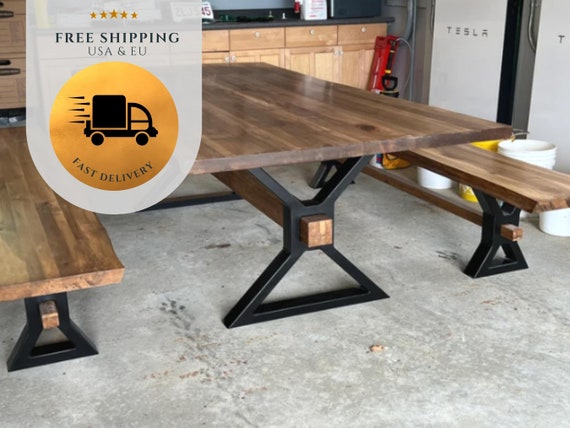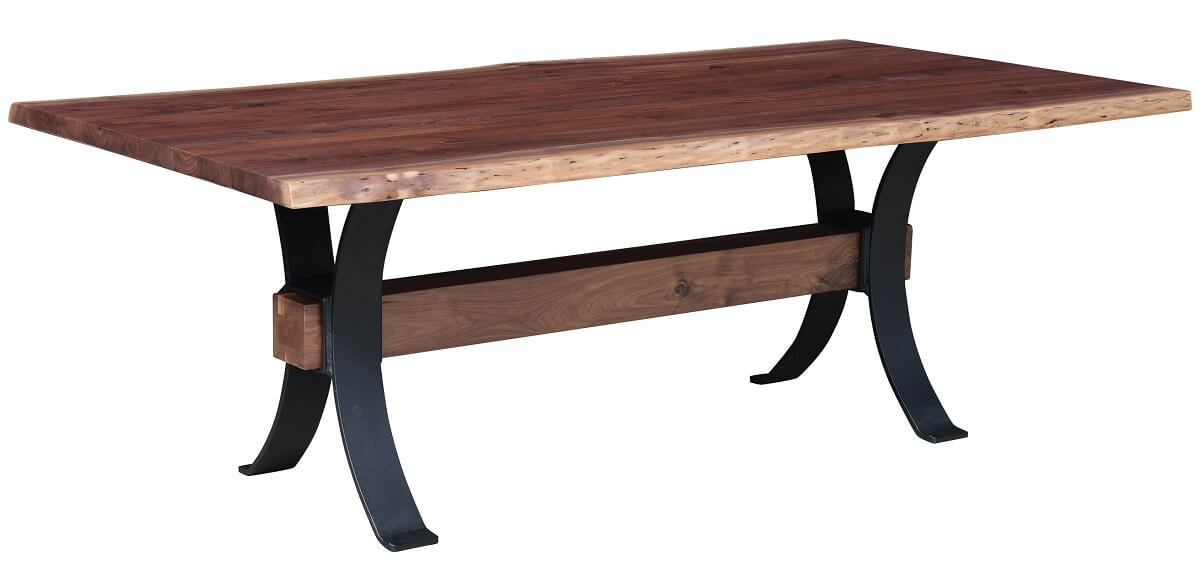How the Right Dining Room Table Legs Can Complete Your Dining Room Look
Specialist Tips for Setting Up Dining-room Table Legs for Maximum Stability
When it comes to mounting dining space table legs, attaining maximum stability is critical for both functionality and aesthetic appeals. What details strategies can boost security also further?
Choose the Right Legs
When choosing the suitable legs for your dining-room table, it is important to consider both capability and visual appeals. The legs you pick will dramatically influence the general design and security of the table. Evaluate the table's intended use; if you anticipate regular events, tougher legs, such as those made from solid wood or steel, might be much more suitable, as they provide enhanced longevity and assistance.
Conventional dining tables generally vary from 28 to 30 inches in elevation, so make certain the legs straighten with this criterion for convenience. Tapered legs can add a contemporary touch, while turned legs may share a more timeless visual.

Select Appropriate Equipment
Just how can the best hardware improve the stability and durability of your dining-room table? The option of proper equipment is crucial to ensuring that the legs of your table are securely connected and able to hold up against regular usage. Top quality screws, bolts, and braces provide the required strength to support the weight of the table, as well as any kind of extra loads placed upon it throughout meals or events.
When picking screws, choose those made from sturdy materials such as stainless steel or brass, which withstand corrosion and preserve integrity in time. The length of the screws is similarly vital; they should permeate deeply right into the table's structure without compromising honesty. For bolted connections, consider utilizing lock washing machines to avoid loosening up because of resonance or movement.
Additionally, using edge brackets can include extra assistance, especially for larger tables or those with heavier tops. These brackets distribute weight uniformly and help maintain the table's form. Ensuring that the equipment you choose is appropriate for the certain materials of your table will further boost its total security and long life, enabling you to appreciate your dining experience for many years ahead.
Ensure Appropriate Alignment
Correct positioning of dining-room table legs is necessary for both aesthetic appeal and functional security. Misaligned legs can bring about an uneven tabletop, which might not only be visually unappealing yet additionally jeopardize the table's functionality. To accomplish optimal positioning, start by gauging the distance from the table's corners to the leg attachment points. This ensures that each leg is located equidistant from blog the sides, producing a balanced look.
Use a degree throughout setup to validate that each leg is vertical to the table top. This step is essential, as also minor inconsistencies can rise right into substantial stability problems with time. It is suggested to mark the desired leg positions on the bottom of the table with a pencil or concealing tape prior to securing their explanation them. This method offers as a visual overview, enabling adjustments as needed.
In addition, verify the alignment after the preliminary screws are tightened, as adjustments might be necessary prior to totally protecting the equipment. By prioritizing proper placement, you not just enhance the table's total layout however likewise guarantee that it stays practical and steady for several years ahead.

Consider Weight Distribution
After ensuring proper alignment of the dining-room table legs, it's essential to consider weight circulation to enhance stability and performance. dining room table legs. Proper weight distribution is crucial in protecting against tottering and guaranteeing that the table can sustain its designated tons without danger of tipping or collapsing
When placing the legs, ensure they are positioned at equivalent ranges from the facility of the table to equally disperse the weight throughout the structure. Consider the weight of the tabletop and any kind of things that will often hinge on it, such as tabletop appliances or attractive pieces. Tables with heavier surfaces must preferably have legs located closer to the edges, as this maximizes the base of support and decreases the risk of instability.
Furthermore, if the table is meant for usage in a high-traffic area, consider making use of much heavier products for the legs or adding maintaining elements, such as cross-bracing or a you could try this out reduced shelf - dining room table legs. These changes can aid keep balance and stop moving during usage. Eventually, a well-considered weight circulation technique will significantly enhance the table's general performance, guaranteeing it continues to be a useful and appealing focal point for your eating space
Test Security Prior To Use
Evaluating the stability of the dining room table before usage is an important step that must not be neglected. If the table reveals instability, identify the legs or joints that might require change.
Next, check that all screws and fasteners are tightened up effectively. Loosened links can result in instability and prospective damage gradually. If required, utilize wood adhesive on joints to enhance stability, guaranteeing to permit sufficient drying time.

Final Thought
To conclude, the installation of dining-room table legs calls for careful consideration of products, weight, positioning, and equipment distribution to accomplish optimum stability. By selecting strong legs and premium fasteners, making sure exact positioning, and dispersing weight equally, the structural integrity of the table can be substantially improved. Performing a stability examination before routine use further makes sure that the table will certainly stand up to daily stress, thus supplying a secure and dependable eating experience.
When it comes to setting up dining room table legs, attaining maximum stability is vital for both performance and aesthetics. The legs you select will substantially affect the total design and stability of the table (dining room table legs). Conventional dining tables usually range from 28 to 30 inches in elevation, so guarantee the legs align with this criterion for comfort.Correct alignment of eating area table legs is important for both visual charm and functional security.In final thought, the setup of dining area table legs calls for mindful consideration of materials, weight, positioning, and hardware distribution to attain maximum stability